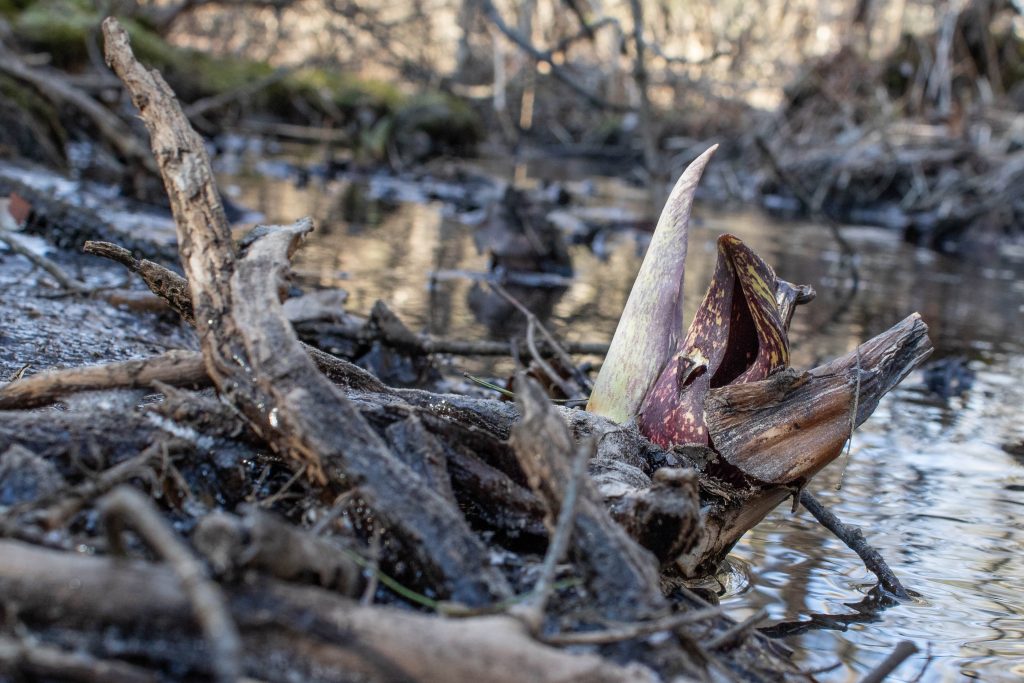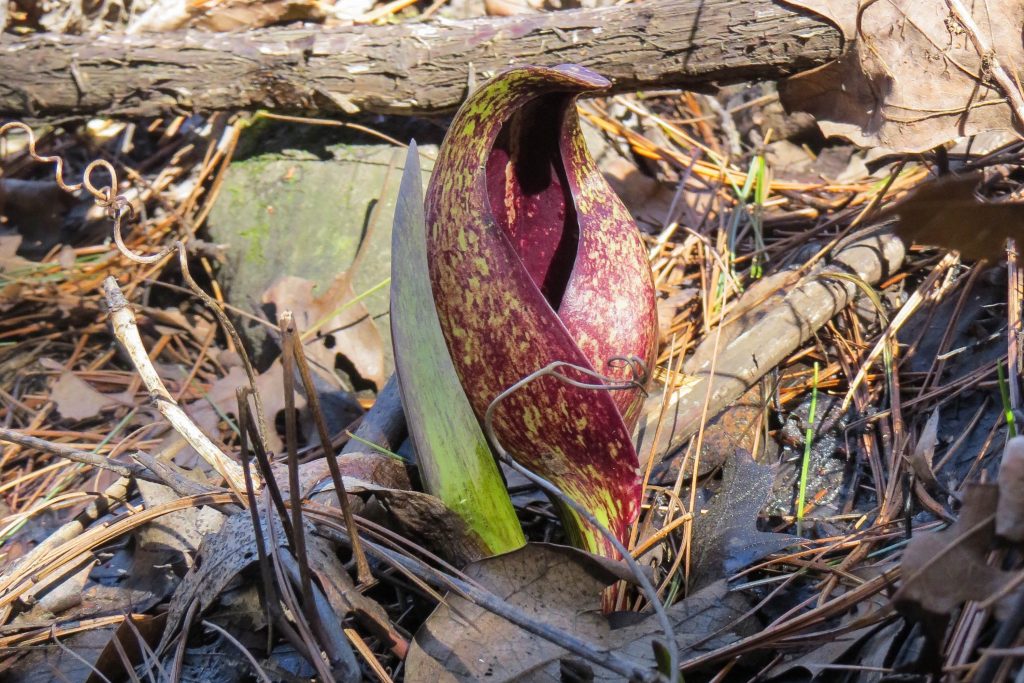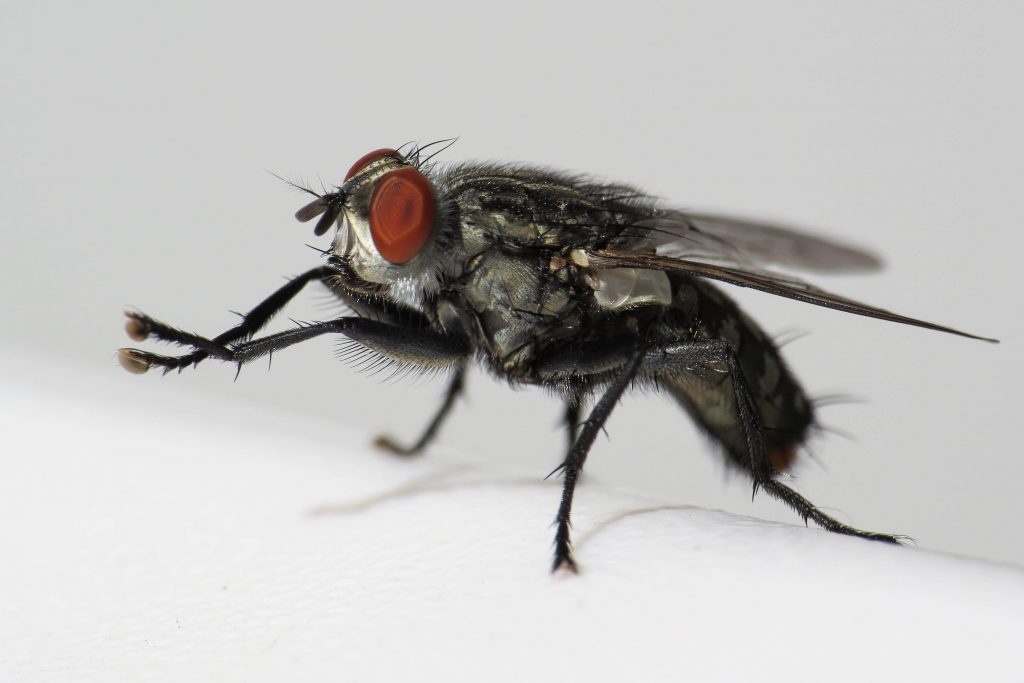It may be hard to imagine finding flowers and pollinators in February, but the first flowers of the spring can already be seen blooming all across New England. Poking up from the frozen ground of swamps and stream banks, skunk cabbage (Symplocarpus foetidus) doesn’t exactly look like your average flower. It produces multiple small flowers on a central spike, or spadix, surrounded by a purplish hood known as a spathe. Few other flowers in northeastern North America share this odd floral structure – a characteristic of plants in the largely tropical Arum family, which includes popular houseplants like Spathiphyllum (peace lily), Philodendron, and Monstera.

Aside from its bizarre appearance, skunk cabbage stands out from other native New England plants with another unique feature: its flowers have the ability to produce significant amounts of heat! Fueled by energy stored in the plant’s modified underground stem (called a rhizome), skunk cabbage can maintain temperatures of over 50 degrees within the spathe even as external air temperatures drop below freezing. Skunk cabbage flowers produce varying amounts of heat depending on environmental conditions as well as their age. Like some other related plants in the Arum family, skunk cabbage flowers are all female when the spathe first opens. These later become pollen-producing male flowers, with flowers at the top of the spadix transitioning first. Heat production peaks during the female phase, declining as the flowers age and begin to produce pollen.

Why does skunk cabbage produce heat? Despite several studies of this phenomenon, the answer is unclear. Production of heat may be necessary to allow skunk cabbage to grow and flower in a rather inhospitable environment, preventing the buildup of snow and ice around the spathe. By flowering well before most other plants, skunk cabbage may be able to take advantage of any insects that are active at this time of year, with heating performing the additional function of attracting insect pollinators. The purplish color of skunk cabbage spathes, in addition to their unpleasant smell, suggests that they may be pollinated by flies. Other primarily fly-pollinated plants share similar traits, tricking flies into visiting their flowers when searching for sites to lay eggs. By heating its spathes, skunk cabbage could provide an extra incentive for these early-season insects to visit its flowers.

While flies have been documented at skunk cabbage flowers, frequency of successful pollination events seems to be quite low. Interestingly, some of the insects most often seen at skunk cabbage flowers are honey bees, which visit male skunk cabbage flowers as an early-spring source of pollen. However, it’s unlikely that honey bees act as effective pollinators, since they tend not to visit skunk cabbage’s nectarless female flowers and may not even make contact with the spadix itself, instead collecting pollen that has fallen to the base of the spathe.
Skunk cabbage provides an excellent example of just how much remains unknown about the ecology of some of our most ubiquitous (and fascinating!) native plant species. As you walk through the woods in late winter and early spring, keep an eye out for this strange plant in any area with wet soil and appreciate the incredible adaptations skunk cabbage has evolved that allow it to thrive at a time when few other flowers dare to bloom.
PC: Max McCarthy

